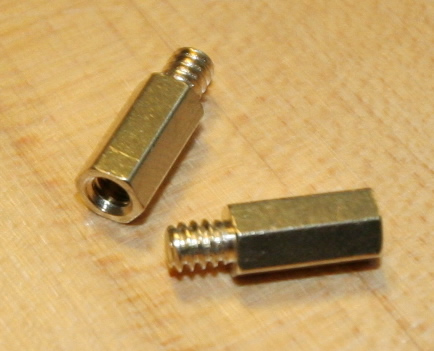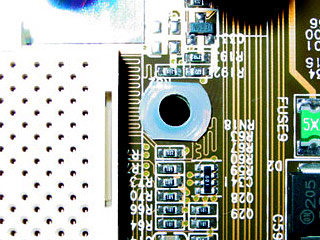So i've been having no signal problems with my new build and my friend suspects that the mobo is dead. Most likely from not being properly grounded. How do you ground a mobo? Don't you just screw it into the chasis? I thought I did that but maybe I didn't screw it in well enough because one of them popped out when I was installing the ram. Is there anything else I need to ground?
You are using an out of date browser. It may not display this or other websites correctly.
You should upgrade or use an alternative browser.
You should upgrade or use an alternative browser.
Grounding the Mobo
- Thread starter musashia
- Start date
Umm, I have never heard of grounding the mobo. Everyone I nkow just screws em in. But before judging your mobo dead, make sure EVERYTHING is properly hooked up, such ass the main power cable for the mobo, the cpu fan...
I have. Believe me. I have tried everything.
I am getting know signal to the monitor so this is how I troubleshooted. Check cables. Tried new cables. Switched from VGA to DVI to DVI to DVI. Took out the video card. Plugged it into the motherboard video port. Checked all power sources. But still... NO LUCK WITH ANYTHING! MONITOR GETS NO SIGNAL!
Synesthesia
New Member
The first motherboard I used in a build (only a year ago) had the screw holes connected to the circuit, which must have meant that it was grounded through that method.
I heard that not grounding it can fry the board....but most likely not on your first start up try.
I heard that not grounding it can fry the board....but most likely not on your first start up try.
Synesthesia
New Member
I think you have to?
The standoffs keep the bottom of board from shorting out against the case plate. They go under and only under the grounded holes on the board. Plus without them the board would not line up with the I/O bracket in the back of the case.




Grounding a motherboard is nothing new. When you install a motherboard, you want to make sure that you screw into the holes which there is a silver plating around. Not screwing into those holes will cause your motherboard to fail in starting.
It will start fine without. You can have it lying flat on your desk, and it will start fine. The ground needed to operate is given through the black psu-wire
your CPU and motherboard are not compatible, i posted that in your other thread
Seriously? How did you find that? They're both intel and the mobo says it takes Core 2 Duo processors..
Cleric7x9
Active Member
Seriously? How did you find that? They're both intel and the mobo says it takes Core 2 Duo processors..
there is so much more to it. manufacturing process (45nm, 65nm?), front side bus, memory support, etc.
When I use to build computers all the time I killed a few mother boards by grounding them. I know most mother boards have a place for a ground but I never use it. Now I use plastic mounts and plastic screws so nothing gets grounded. I have not killed a MD in several years. Sometimes a grounded MD will make the computer act like it is dead then once the ground is removed the computer will work fine as long as it the ground didn't killed the mother board.
Now I use plastic mounts and plastic screws so nothing gets grounded.
Do you use them everywhere (including psu, harddrives, pci cards, etc)? What about the IO shield - this also makes contact...?
Grounding a motherboard is nothing new. When you install a motherboard, you want to make sure that you screw into the holes which there is a silver plating around. Not screwing into those holes will cause your motherboard to fail in starting.
Using the standoffs is not for grounding the board. Its to keep the back of the PCB/board from shorting out on the case metal mounting plate.
It will start fine without. You can have it lying flat on your desk, and it will start fine. The ground needed to operate is given through the black psu-wire
Right.
grounded backplate ?
When I built my system and installed the CPU cooler, there was a backplate for that cooler. The instructions said to peel the heavy paper off of the backing plate. So I did. When I turned the system on, I had no display. I thought the Mobo wasn't working. I starting doing a little poking around and going through the building process and decided that the back plate was probably shorting out the board. I put that backing paper back on the backplate, fired it up and everything was good. You might want to think about if you have a situation like that.
When I built my system and installed the CPU cooler, there was a backplate for that cooler. The instructions said to peel the heavy paper off of the backing plate. So I did. When I turned the system on, I had no display. I thought the Mobo wasn't working. I starting doing a little poking around and going through the building process and decided that the back plate was probably shorting out the board. I put that backing paper back on the backplate, fired it up and everything was good. You might want to think about if you have a situation like that.
